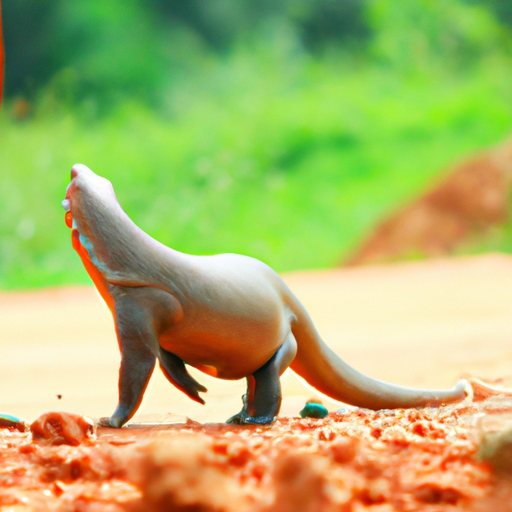 Introduction:
Introduction:
Nature is a remarkable force that constantly challenges organisms to evolve and adapt in order to survive. Animals, in particular, have developed an astonishing array of adaptations that allow them to thrive in various environments across the globe. From the deepest oceans to the highest mountain peaks, the diversity of animal adaptations is both awe-inspiring and crucial to maintaining ecological balance. In this article, we will delve into the intricacies of animal adaptations, exploring the different types, the underlying mechanisms, and some remarkable examples that highlight the wonders of evolution.
Types of Adaptations:
1. Structural Adaptations:
Structural adaptations refer to physical characteristics that enable animals to better survive in their environment. Examples include:
a) Camouflage: Many animals have evolved coloration patterns that blend seamlessly into their surroundings, thus providing them with a significant advantage in hunting or avoiding predators.
b) Morphological adaptations: These adaptations involve changes in body shape or structure to suit specific functions. For instance, the long neck of a giraffe allows it to reach leaves on tall trees, while the streamlined bodies of dolphins enable them to swim swiftly through water.
c) Appendages and specialized organs: Certain animals possess unique appendages or organs that help them perform specific tasks. The prehensile tail of a monkey aids in grasping branches, while the proboscis of a hummingbird facilitates the extraction of nectar from flowers.
2. Behavioral Adaptations:
Behavioral adaptations involve modifications in an animal’s actions or responses to their environment. Notable examples include:
a) Migration: Many species undertake long-distance migrations to find food, escape harsh weather conditions, or reproduce in favorable environments. The annual Arctic tern migration, covering around 44,000 miles, is a remarkable example of this adaptation.
b) Hibernation: In response to harsh winters or scarcity of food, some animals enter a state of dormancy known as hibernation. This adaptation allows them to conserve energy and survive until conditions improve.
c) Social behavior: Animals often exhibit complex social structures and behaviors that enhance their chances of survival. For instance, the cooperative hunting behavior of lions or the formation of intricate bee colonies are prime examples of this adaptation.
Mechanisms of Adaptation:
1. Natural Selection:
Natural selection, proposed by Charles Darwin, is the cornerstone of evolutionary theory. It is the process by which certain traits become more or less common in a population over generations. Animals possessing advantageous traits are more likely to survive and reproduce, passing on their genes to the next generation. Gradually, this leads to the adaptation of populations to their environment.
2. Genetic Mutation:
Genetic mutations are random changes in an organism’s DNA sequence. Occasionally, these mutations result in advantageous traits that provide a selective advantage for survival. Over time, such mutations can accumulate in a population, leading to the development of new adaptations.
3. Phenotypic Plasticity:
Phenotypic plasticity refers to an organism’s ability to adjust its physical or behavioral characteristics in response to environmental changes. This adaptation allows animals to cope with varying conditions without requiring genetic changes. Phenotypic plasticity can be reversible, occurring within an individual’s lifetime, or irreversible, involving changes that persist across generations.
Remarkable Examples of Animal Adaptations:
1. The Chameleon:
Chameleons are renowned for their remarkable ability to change color. This extraordinary adaptation helps them blend into their surroundings, evading predators or ambushing prey. The color change is achieved through specialized cells called chromatophores, which contain pigments that expand or contract, altering the animal’s appearance.
2. Polar Bear:
Polar bears have evolved several adaptations to survive in their harsh Arctic environment. Their white fur provides excellent camouflage, while their thick layer of blubber offers insulation against the freezing temperatures. Additionally, their large paws equipped with sharp claws aid in swimming and hunting on sea ice.
3. Bats:
Bats have developed numerous adaptations to navigate and hunt in the dark. Their ability to echolocate, emitting high-frequency sounds and interpreting the echoes, allows them to detect obstacles and locate prey. This remarkable adaptation enables bats to be highly successful nocturnal hunters.
Conclusion:
The world of animal adaptations is a testament to the brilliance of nature’s evolutionary processes. Through countless generations, animals have developed an astonishing array of structural and behavioral adaptations that allow them to survive and thrive in their environments. Whether it is the chameleon’s color-changing abilities, the polar bear’s adaptations to the Arctic, or the bats’ echolocation skills, each adaptation represents a remarkable solution to the challenges posed by their surroundings. By understanding and appreciating these adaptations, we gain insights into the delicate balance of nature and the wonders of evolution.
